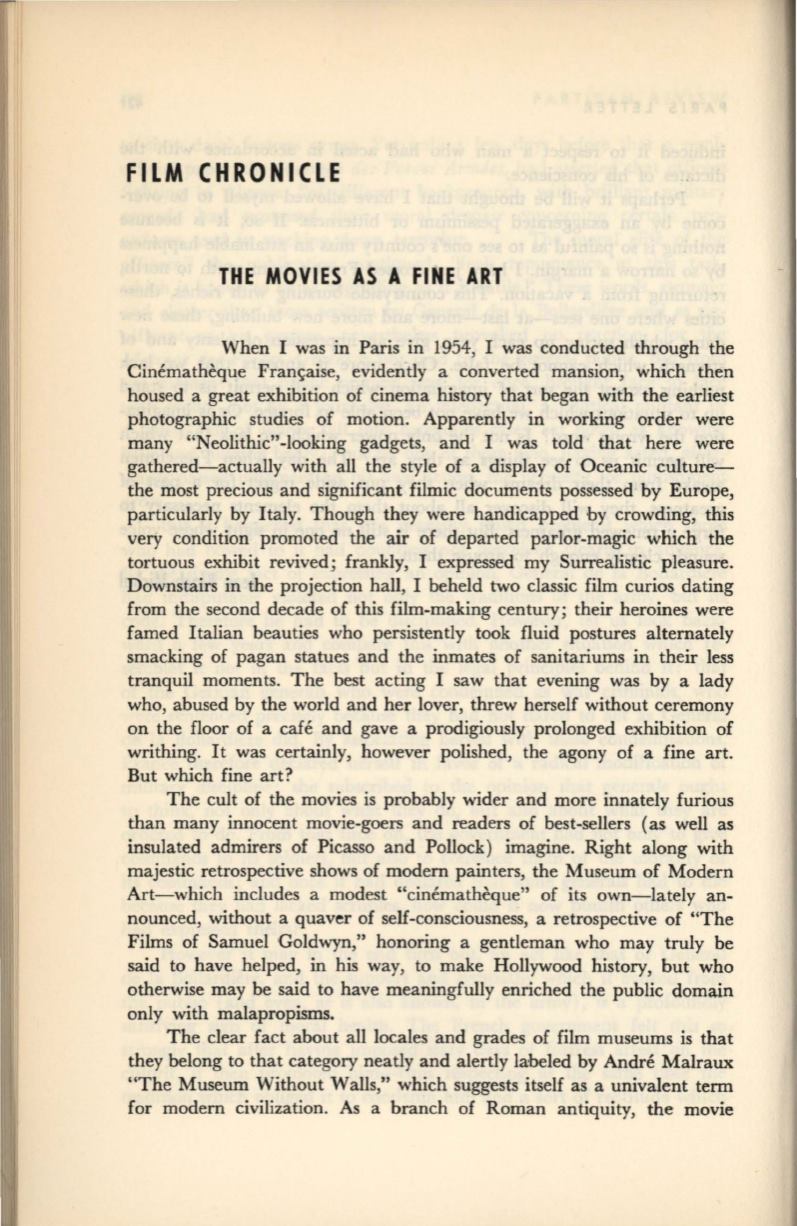
FILM CHRONICLE
THE MOVIES AS A FINE ART
When I was in Paris in 1954, I was conducted through the
Cinematheque Fran«aise, evidently a converted mansion, which then
housed a great exhibition of cinema history that began with the earliest
photographic studies of motion. Apparently in working order were
many "Neolithic"-looking gadgets, and I was told that here were
gathered-actually with all the style of a display of Oceanic culture–
the most precious and significant filmic documents possessed by Europe,
particularly by Italy. Though they were handicapped by crowding, this
very condition promoted the air of departed parlor-magic which the
tortuous exhibit revived; frankly, I expressed my Surrealistic pleasure.
Downstairs in the projection hall, I beheld two classic film curios dating
from the second decade of this film-making century; their heroines were
famed Italian beauties who persistently took fluid postures alternately
smacking of pagan statues and the inmates of sanitariums in their less
tranquil moments. The best acting I saw that evening was by a lady
who, abused by the world and her lover, threw herself without ceremony
on the floor of a cafe and gave a prodigiously prolonged exhibition of
writhing. It was certainly, however polished, the agony of a fine art.
But which fine art?
The cult of the movies is probably wider and more innately furious
than many innocent movie-goers and readers of best-sellers (as well as
insulated admirers of Picasso and Pollock) imagine. Right along with
majestic retrospective shows of modern painters, the Museum of Modern
Art-which includes a modest "cinematheque" of its own-lately an–
nounced, without a quaver of self-consciousness, a retrospective of "The
Films of Samuel Goldwyn," honoring a gentleman who may truly be
said to have helped, in his way, to make Hollywood history, but who
otherwise may be said to have meaningfully enriched the public domain
only with malapropisms.
The clear fact about all locales and grades of film museums is that
they belong to that category neatly and alertly labeled by Andre Malraux
"The Museum Without Walls," which suggests itself as a univalent term
for modern civilization. As a branch of Roman antiquity, the movie


